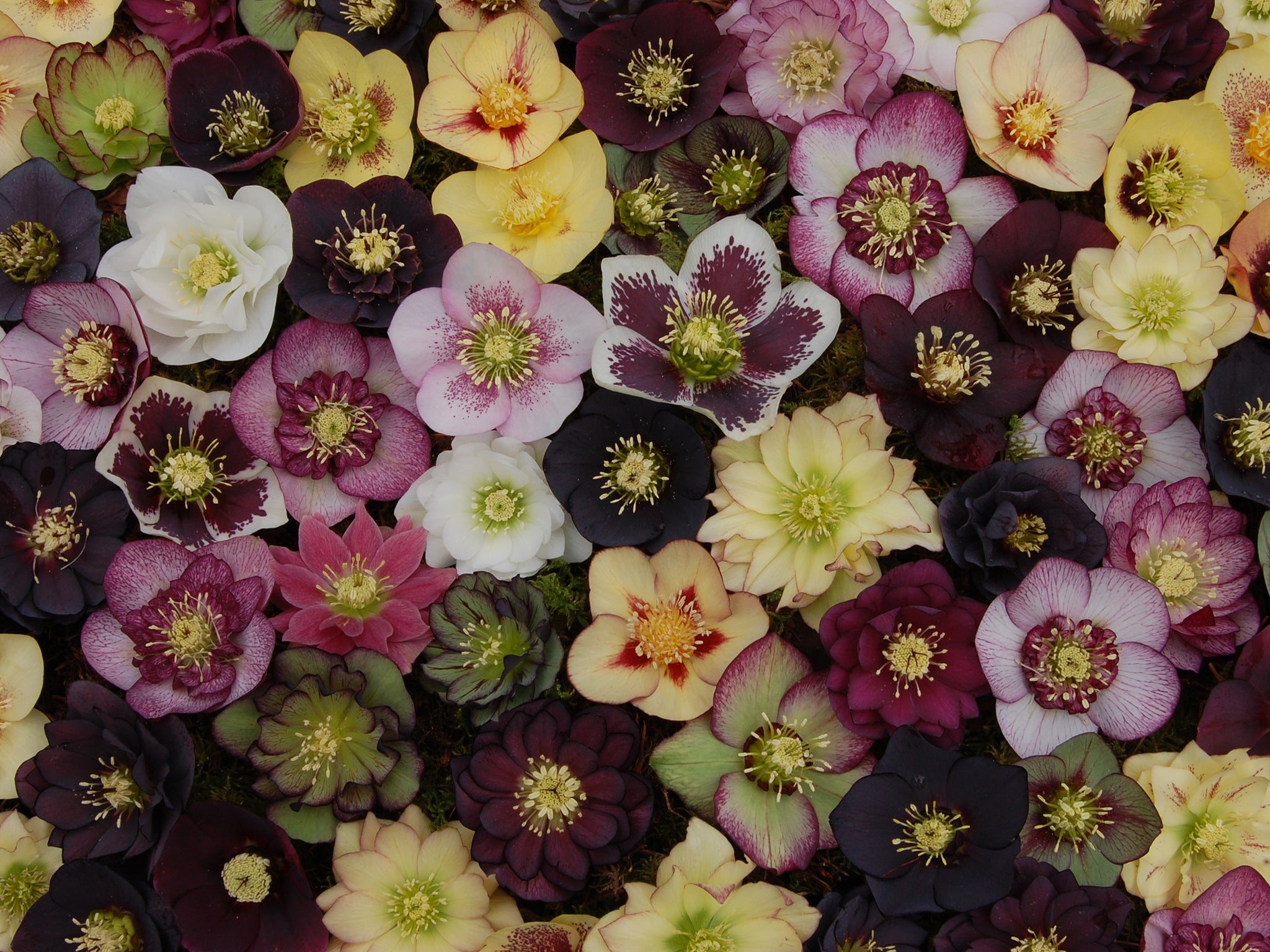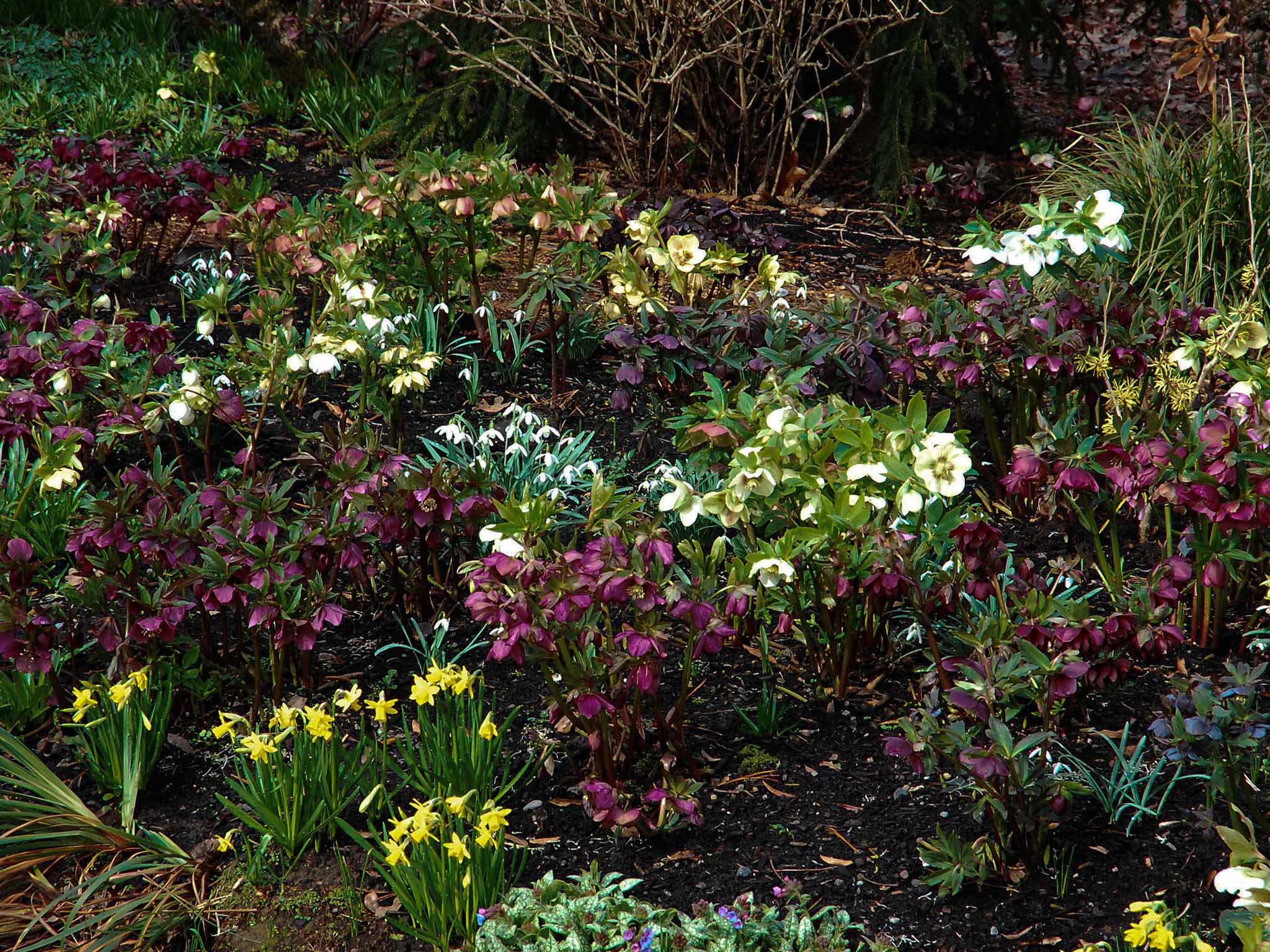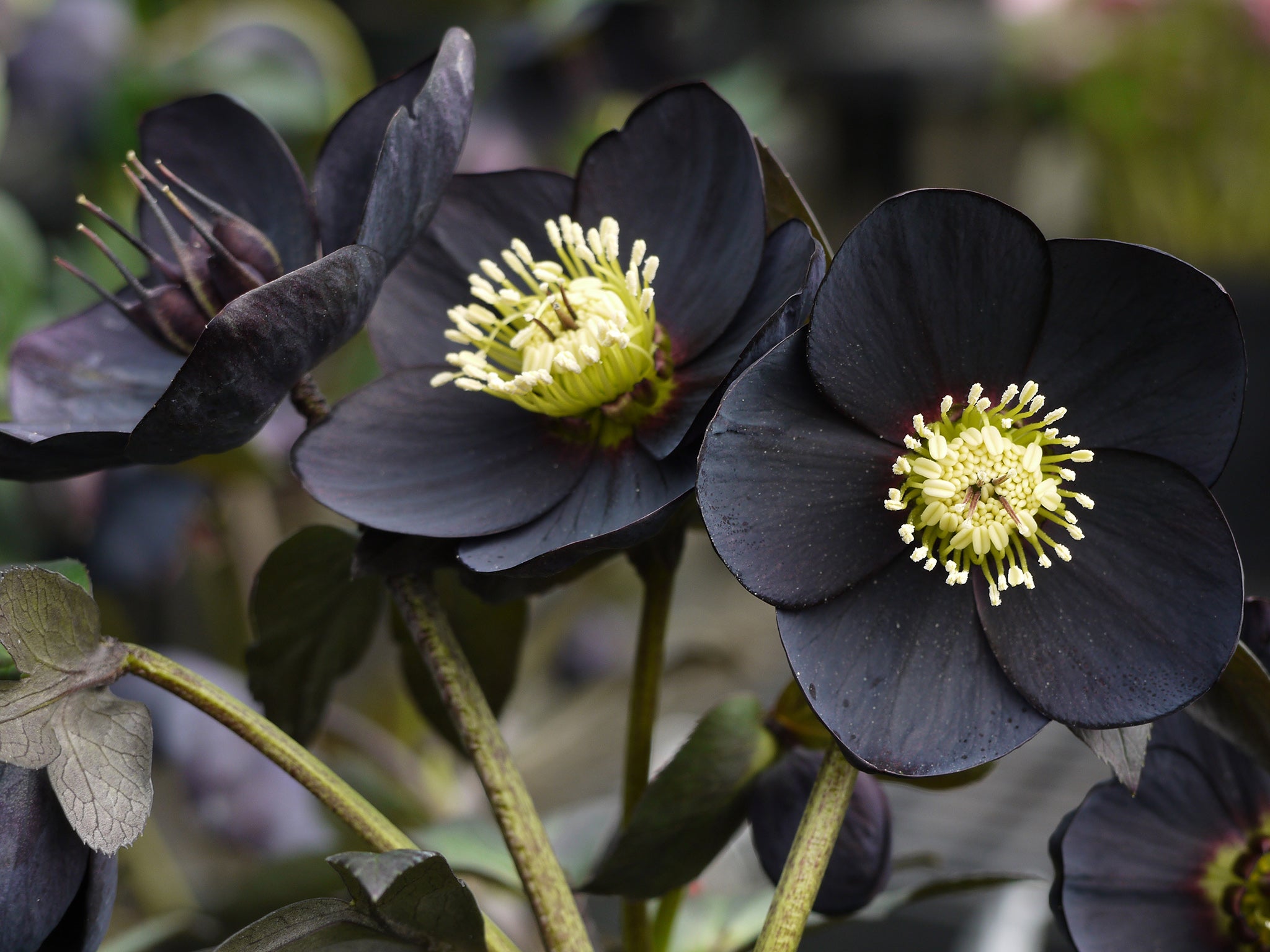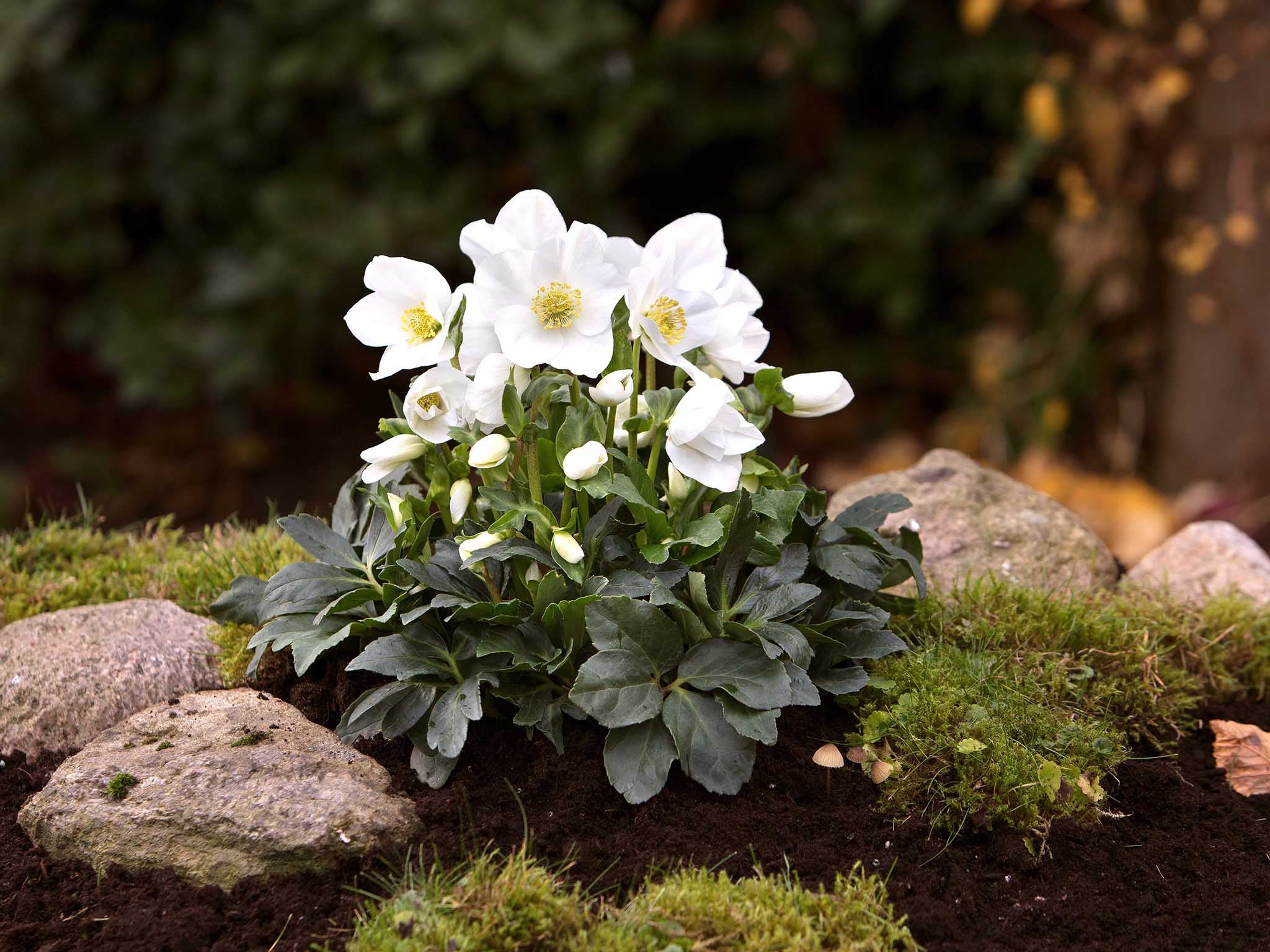The Independent's journalism is supported by our readers. When you purchase through links on our site, we may earn commission.
Early bloomer: The Hellebore perennial has never been better
With the hard work of nurseries in Oregon and Germany, says Adrian Higgins, the early bloom of the Hellebore will spring your garden forward into the new season

Certain plants come into vogue and then slip off their pedestal. The daylily in all its rich variety was once the perennial to plant for its seemingly endless supply of showy blooms in the gathering heat of early summer. The deer love its succulent buds, which may have something to do with its fall.
There is one hardy perennial – the hellebore – that has steadily won a place in the heart of the gardener over the past couple of decades and that shows no sign of becoming disfavoured or trite. This is in part because deer seem to leave it alone, but that’s only the start of this plant’s value.
The hellebore – I speak of the most familiar version, the Lenten rose (Helleborus x hybridus) – is among the first plants to tell us that spring is on the horizon. In mid to late winter, the first shoots begin to push from its centre and over the ensuing month it forms a clump of attractive green foliage decorated with nodding blossoms.
At first, the clump’s eruption is skyward but soon gets broader as it grows and the leaves fill in to cloak the blooms. An established plant will be 20 inches high or so, at least as wide and decorated with as many as a hundred flowers. They are small bowls, nodding to protect their pollen against the winter weather. The colours are extraordinary and they change, softening as the plant completes its seasonal growth spurt. Some are pale yellow, others apricot, others creamy white, or green, or deep magenta, wine or purple-black.

In a normal winter, the hellebore begins to stir sometime in February, reaches its peak of fresh blossoming in March and the blooms persist ornamentally until the end of April.
The flowers endure because the petals are in fact thick structures called sepals. Oddly, for a herbaceous perennial, the hellebore is evergreen. But for a clean display, the previous season’s leaves should be removed before the new growth gets established. Be careful not to slice into the fresh growth or your fingers.
Hellebores are remarkably cold-hardy, which makes them one of the very few plants in the garden that bridges that ground-shaking, protean period from late winter to early spring. I often greet the hellebore in the frenzy of April and think: “You kicked off this party way back in February.”
Other gardeners see the beauty, grace and value of hellebores, not least because hellebores can grow in the dry shade of a wooded area where the choices are limited. In hot regions, they prefer a little shade.
When hellebores first hit the scene, the varietal offerings were meagre and, in retrospect, the blooms were mediocre. “We saw the potential of beautiful flowers in English books,” says Marietta O’Byrne, co-owner of Northwest Garden Nursery in Eugene, Oregon.
She and her husband, Ernie O’Byrne, have been key figures in this advance. They have spent almost 30 years refining their varieties in the decidedly low-tech and laborious practice of hand-pollinating and then bagging flowers (to prevent unintended bee pollination) to create seed strains uniform within their respective groups. They are not the usual genetic clones found in mass-produced horticulture, but, as Marietta O’Byrne points out, are “more like brothers and sisters”.

As a result of their skill and devotion, they have raised the bar to the point that the original English varieties they aspired to pale by comparison. They have worked too on foliage ornament and in developing plants where the blooms are more outward-facing and easier to appreciate.
Among single-flowered offerings, the O’Byrnes have nine groups, including those in black, ruby, slate blue, yellow and apricot. Among double-flowered versions, there are 15 types of colour and form. When connoisseur hellebores hit the scene, the hot colour was black. It remains a dramatic hellebore and is used to full effect, says Marietta O’Byrne, at the threshold of spring when it can be paired with other perennials then just appearing in their intense shades of yellow and acid green. Candidates include daffodils, early tulips, hakone grass or one of the chartreuse hostas.
Gardening Tip
Vegetable and flower seeds can be cheaper from retail seed racks compared with online sources – but check quantities for a true comparison, usually measured by weight or the approximate number of seeds in a packet
As cut flowers, hellebores are prone to wilting. The way to bring them indoors is to snip off the blooms and float them in a shallow bowl where they will keep for a week or more. The O’Byrnes’ nursery holds a couple of open days but is not mail-order. Their seed and seedlings go to major wholesale growers, who then supply garden centres and other retail outlets.
Hellebore flowers bear a passing resemblance to wild roses but are not related. While the Lenten rose has been making strides, a parallel revolution has been occurring in another hellebore, the Christmas rose, developed as a potted plant now sold widely by florists and grocery stores, especially in the run-up to the holidays. The flowers are snow white and, in contrast to the Lenten rose, held conspicuously above the foliage.

The wild Christmas rose, Helleborus niger, is a fussy garden plant and is even unhappier when confined to a pot. For decades, the northwest German firm of growers and breeders, Heuger, has been developing hybrids that take to container cultivation, paving the way for their widespread availability.
It is refreshing to see something in a pot other than moth orchids or poinsettias, but when I hold one of these Christmas rose hybrids, my urge is to plant it in the garden. Orchids and poinsettias won’t survive winter outdoors, but a Christmas rose will, if it is slowly conditioned to the elements. (A cold frame is handy for this, though an unheated shed or garage would work.)
Even a guy behind the potted hybrids would like them set free. “Hellebores are not made (and bred) to be kept indoors for a long time,” says Josef Heuger in an email. His company introduced the Helleborus Gold Collection (HGC) brand in 2002. He is continuing the breeding work started by his father, Paul Heuger, and his uncle, Josef Lemper, in the 1970s. “If you really intend to see the plant flowering for many years more to come, the rule is the shorter the time indoors and the cooler it has been kept indoors the better.” He suggests after their brief stint indoors, they can be placed in outdoor containers around the home or in the garden.
Thanks to growers like Heuger and the O’Byrnes, the hellebore has never been better. We should take advantage of that.
© Washington Post
Join our commenting forum
Join thought-provoking conversations, follow other Independent readers and see their replies
Comments
Bookmark popover
Removed from bookmarks